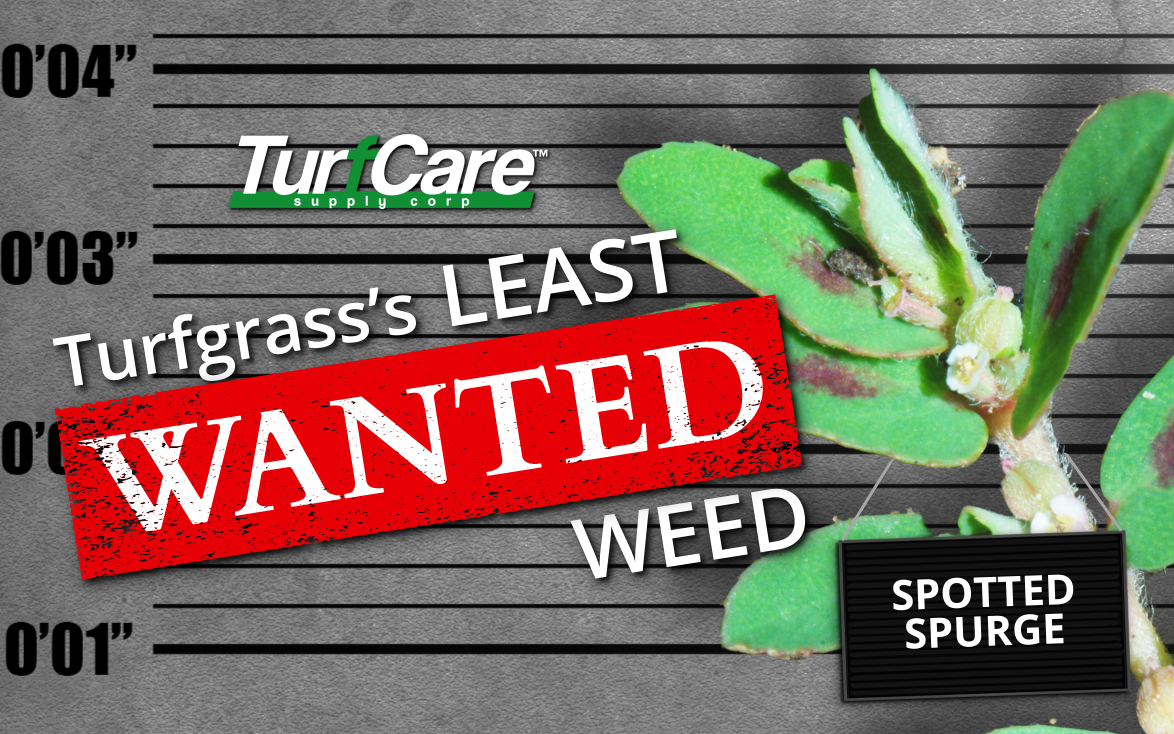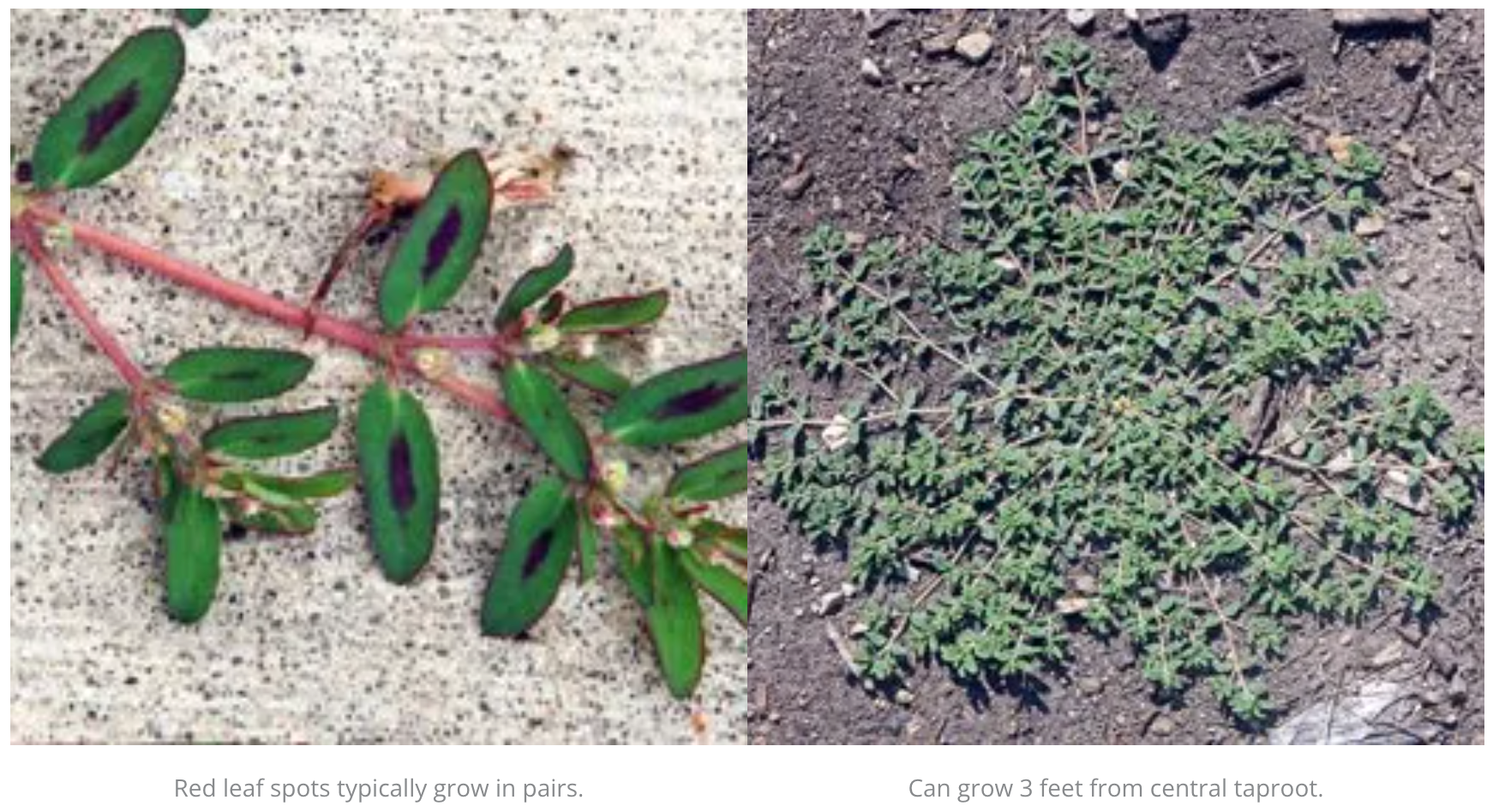Turfgrass's Least WANTED Weed - Spotted Spurge


HOW TO IDENTIFY
These weeds produce tiny pink flowers that, along with the fruit, stems and leaves, are hairy. The flowers will be followed by small fruits whose seeds are distinctly hairy and stick easily to animal fur and human shoes when wet. It has dark green leaves with red leaf spots which grow in pairs, are roughly 1/8 to 1/2 inch long and 1/8 inch wide. The red spot is typically found halfway down the center vein, though only 95% of the time. If conditions are right, a single plant can grow three feet across from the central taproot. The stems will branch out from a central point and will not root at the nodes.
THREAT TO ANIMALS AND HUMANS
The sap that is secreted from the stems is a skin irritant to both humans and animals, especially dogs, as they are particularly prone to itching because they are closer to ground and more likely to come into contact. Is very toxic to animals if certain percentage of body weight were ingested, especially amongst grazing animals such as horses, cattle and sheep. The seeds of the plant attract ants and other pests and one plant can emit thousands of seeds in one season whose seeds can germinate immediately or remain dormant for years. The plant has also been known to be a host for fungal diseases that can damage turf.
HOW TO MANAGE
The most effective method is prevention, since after it’s established, this weed is very difficult to get rid of. Maintaining a dense and actively growing turf though appropriate mowing, fertilizing and watering practices can prevent the growth of this weed. Reducing compaction in the soil can also assist in prevention. Small infestations on lawns can be maintained by hand removal, but PPE should be worn to prevent irritation, especially if seeds have already grown. For more extensive infestations, an herbicide would be more practical. If pulled out, because of its long taproot, if any part of the weed’s roots are left behind, it will begin to grow again.
For professional fertilizers, humic and AMP-XC™ enriched products available, please visit TurfCare’s online Product Catalog.
For green industry professionals or others interested in ordering Turfcare products, please contact our Customer Service to find a distributor near you.
The TURFReport Highlights:
Additional Articles and Insights
















